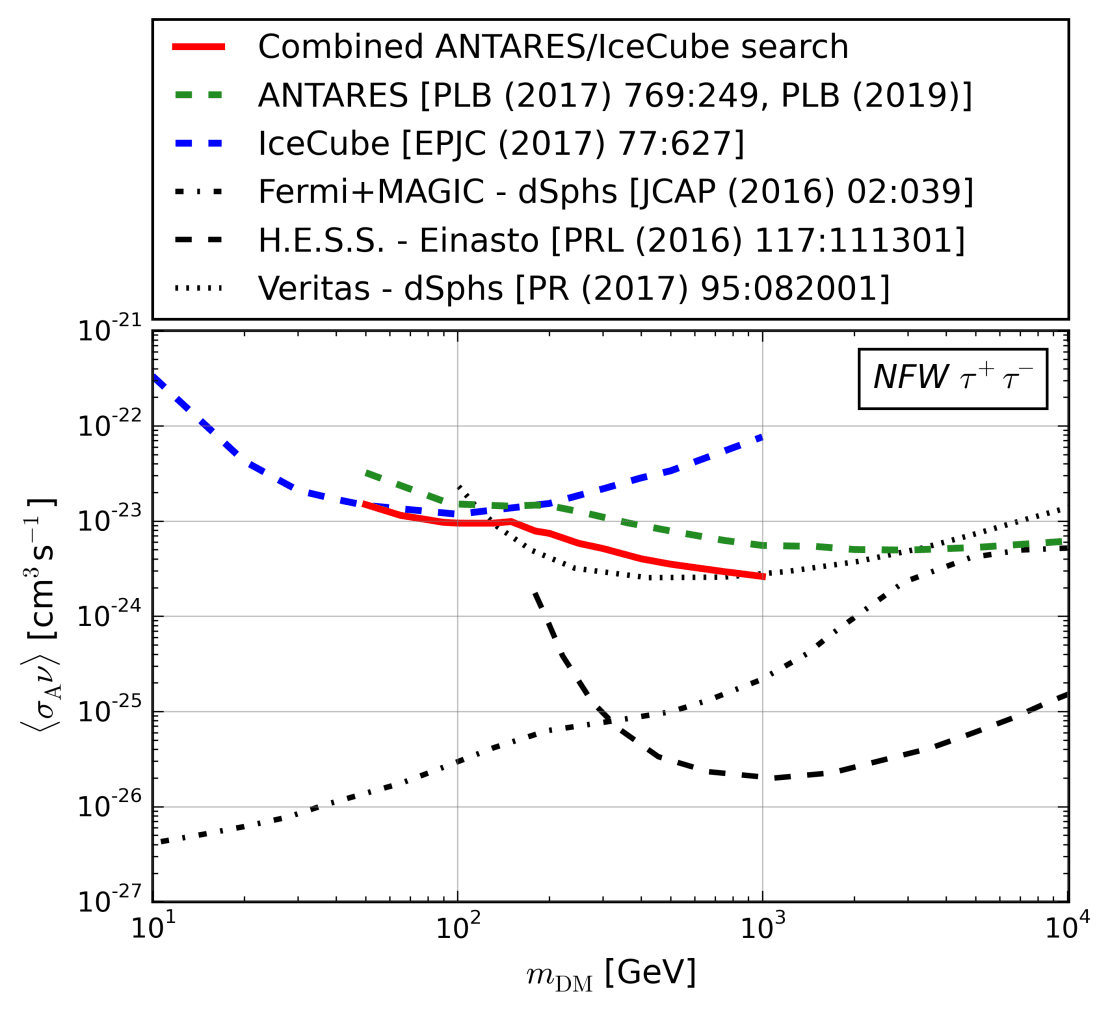We know very few things about dark matter: it makes up more than a quarter of all matter and energy in the universe; it clumps in specific pockets of space, like the centers of galaxies, including the Milky Way; and it has gravitational effects on the visible matter that surrounds it. Still, there are many things we want to learn, and since it has yet to be directly detected, scientists must find ways to study dark matter indirectly.
That’s where neutrinos might be able to help. These weakly interacting, nearly massless fundamental particles might be produced (according to some theories) when particles of dark matter annihilate with each other. If these theories are true, neutrino detectors—like the IceCube Neutrino Observatory at the South Pole and ANTARES in the Mediterranean Sea—can look for excess neutrinos coming from known dark matter hotspots. And if these sources produce more neutrinos than expected, it would support the theory that dark matter is connected to Standard Model particles.
So, the IceCube and ANTARES Collaborations recently probed one of these sources—the center of the Milky Way—by combining data from their respective neutrino telescopes. They did not find any unusual excesses of neutrinos, but they put stronger constraints on the dark matter annihilation cross section averaged over the dark matter velocity. The results of the analysis are outlined in a paper submitted recently to Physical Review D.

The IceCube Neutrino Observatory is an array of 5,160 optical sensors buried in a cubic kilometer of ice beneath the South Pole. ANTARES (the Astronomy with a Neutrino Telescope and Abyss environmental RESearch project) is made up of 885 similar sensors installed underwater in the Mediterranean Sea off the coast of France. Both experiments detect light that is produced when neutrinos interact with a nucleus in the surrounding medium.
According to Nadège Iovine, an IceCube collaborator from Université Libre de Bruxelles and one of the leads on this analysis, the main motivation for this work was to improve the potential of detecting dark matter–produced neutrinos by combining datasets from the ANTARES and IceCube neutrino experiments. They specifically chose dark matter masses between 50 to 1000 GeV/c^2, a range for which each experiment had already independently obtained limits. The researchers also wanted to confirm that both experiments were operating under the same model assumptions and analysis methods.
So Iovine and her collaborators combined nine years of ANTARES data with three years of IceCube data. These datasets were from previous analyses carried out separately by each collaboration that were optimized for the search for dark matter in the Galactic Center. They then looked for neutrinos that could be produced by the annihilation of dark matter particles through various specific channels and under the assumptions of two different dark matter halo profiles.
They did not find evidence for dark matter; there were no excess neutrinos coming from the Galactic Center. Therefore, the researchers put limits on the dark matter annihilation cross section averaged over the speed of the particle—the thermally averaged dark matter self-annihilation cross section. The combined limits were improvements on the limits previously obtained by each experiment.
Ultimately, the analysis demonstrated the promising potential of combined analyses using datasets from both the ANTARES and IceCube neutrino telescopes. “This work brought to light the differences that can occur between two similar analyses and provides a benchmark for future combined analyses,” says Iovine.
Still, the hunt for dark matter is not over yet. Sebastian Baur, another IceCube scientist from Brussels, says, “With more years of data to come, a better understanding of the detector, and new statistical methods under development, we expect to further improve our results in the near future.”
info “Combined Search for neutrinos from Dark Matter Self-Annihilation in the Galactic Centre with ANTARES and IceCube,” IceCube Collaboration: M. G. Aartsen et al., Physical Review D 102 (2020) 8, 082002, journals.aps.org, arxiv.org/abs/2003.06614